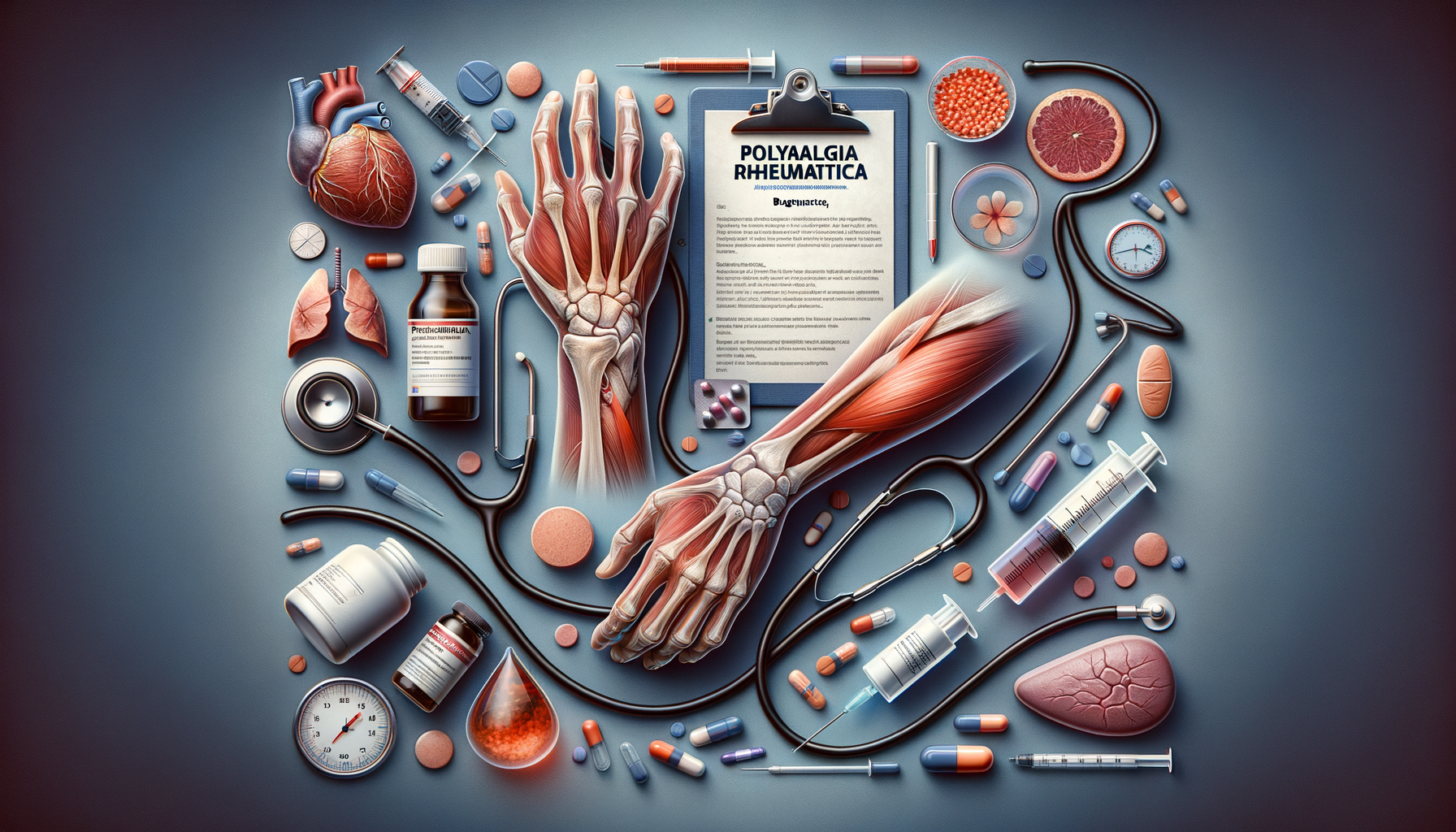
Polymyalgia Rheumatica Explained: A Practical Guide to Managing Symptoms and Improving Daily Life
Understanding Polymyalgia Rheumatica Symptoms
Polymyalgia Rheumatica (PMR) is an inflammatory disorder that predominantly affects older adults. The symptoms often appear suddenly and can be quite distressing. The hallmark of PMR is muscle pain and stiffness, particularly in the shoulders, neck, and hips. These symptoms are usually more pronounced in the morning or after periods of inactivity. Patients often describe the stiffness as a feeling of being “frozen” upon waking.
Additional symptoms can include fatigue, mild fever, and a general feeling of unwellness. Some individuals may experience weight loss or a decreased appetite. Because these symptoms can mimic other conditions, PMR is sometimes difficult to diagnose. It is important for individuals experiencing these symptoms to consult with a healthcare provider, as early diagnosis and treatment can significantly improve quality of life.
Notably, PMR is more common in women than men and typically occurs in individuals over the age of 50. The exact cause of PMR remains unclear, though it is believed to involve both genetic and environmental factors. Understanding these symptoms is crucial for early detection and management, allowing for a better prognosis and less disruption to daily life.
Diagnosing Polymyalgia Rheumatica
Diagnosing Polymyalgia Rheumatica can be challenging due to its symptom overlap with other conditions such as rheumatoid arthritis and fibromyalgia. Healthcare providers typically begin with a detailed medical history and physical examination, focusing on the characteristic symptoms of muscle pain and stiffness.
Blood tests are a key component of the diagnostic process. Elevated levels of inflammatory markers, such as erythrocyte sedimentation rate (ESR) and C-reactive protein (CRP), are indicative of PMR, though they are not exclusive to the condition. Additionally, ruling out other possible causes of symptoms is essential. Imaging tests, such as ultrasound or MRI, may be used to assess inflammation in the joints and surrounding tissues.
In some cases, a trial of corticosteroids is used as a diagnostic tool. If symptoms improve significantly after a short course of these medications, it supports the diagnosis of PMR. However, this approach should be closely monitored by a healthcare provider to ensure proper management and to avoid unnecessary medication use.
Treatment Options for Polymyalgia Rheumatica
Treatment for Polymyalgia Rheumatica primarily focuses on reducing inflammation and relieving symptoms. Corticosteroids, such as prednisone, are the most common treatment and are typically effective in controlling symptoms quickly. The dosage is carefully adjusted over time to find the lowest effective dose that maintains symptom relief while minimizing side effects.
Long-term management may involve additional medications, such as methotrexate, to help reduce the need for corticosteroids. Non-steroidal anti-inflammatory drugs (NSAIDs) may also be used to manage pain and stiffness, though they are generally less effective than corticosteroids in treating PMR.
In addition to medication, lifestyle changes can play a significant role in managing PMR. Regular physical activity, such as low-impact exercises, can help maintain joint flexibility and reduce stiffness. A balanced diet rich in anti-inflammatory foods may also support overall health and well-being. Patients are encouraged to work closely with their healthcare providers to develop a comprehensive treatment plan tailored to their specific needs.
Living with Polymyalgia Rheumatica
Living with Polymyalgia Rheumatica can be challenging, but with the right approach, individuals can manage their symptoms effectively and maintain a good quality of life. Understanding the condition and its impact is the first step in adapting to life with PMR.
Support from healthcare providers, family, and support groups can provide valuable resources and encouragement. Patients are encouraged to communicate openly with their healthcare team about their symptoms and any side effects from treatment. This dialogue can help in adjusting treatment plans as needed and ensuring optimal care.
Adopting a proactive approach to health can make a significant difference. This includes regular medical check-ups, staying informed about the condition, and making healthy lifestyle choices. By taking these steps, individuals with PMR can reduce the impact of symptoms and continue to engage in daily activities with greater ease and comfort.
Conclusion: Navigating Life with Polymyalgia Rheumatica
Polymyalgia Rheumatica is a complex condition that requires a multifaceted approach to management. By understanding the symptoms, seeking accurate diagnosis, and exploring effective treatment options, individuals can significantly improve their quality of life.
While PMR presents challenges, it is important to remember that with proper care and management, the impact of the condition can be minimized. Patients are encouraged to remain informed and proactive in their care, fostering an environment where they can thrive despite the challenges of PMR.
Ultimately, the goal is to empower individuals with the knowledge and tools they need to manage their condition effectively, ensuring that they can continue to lead fulfilling and active lives.